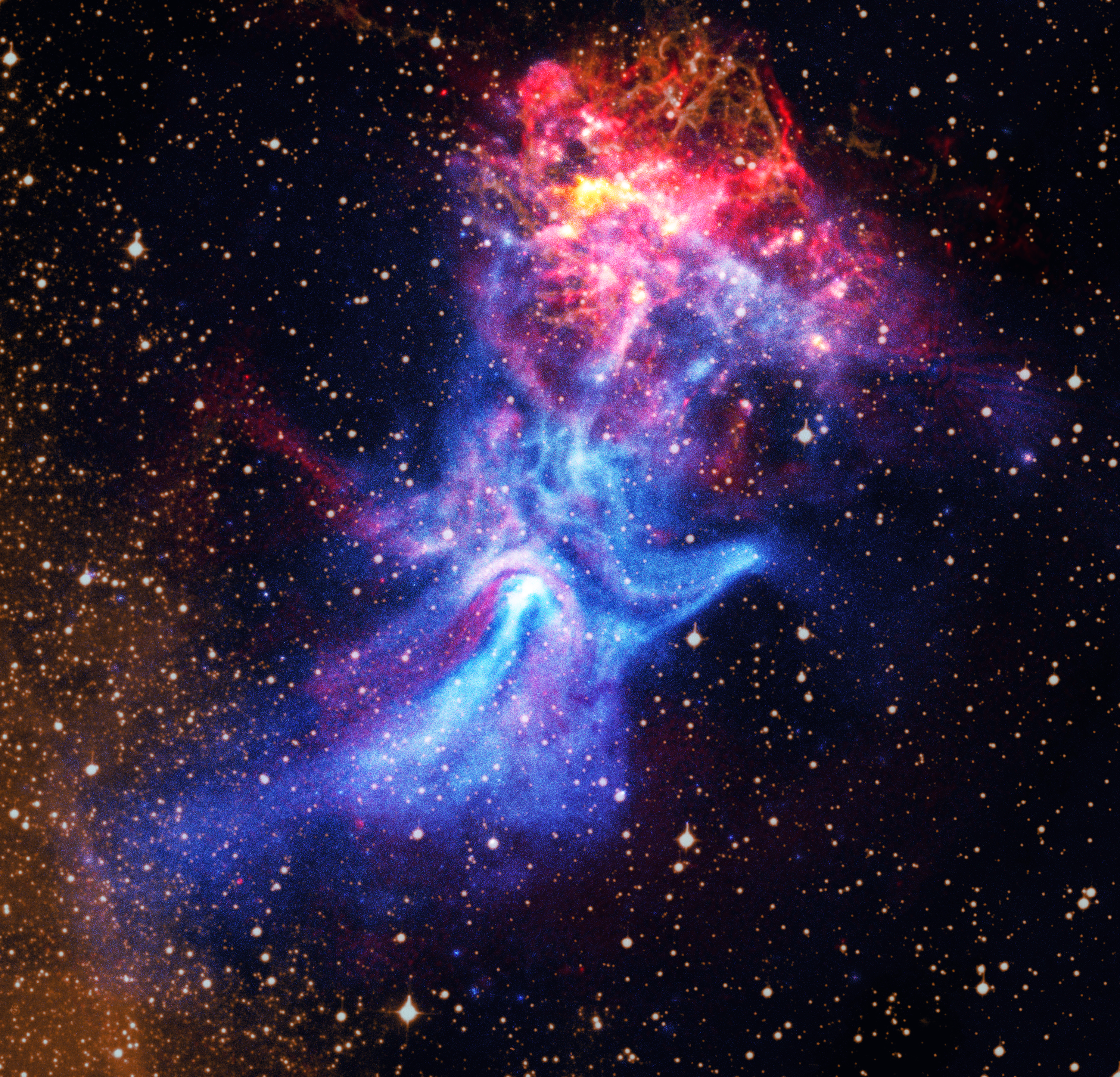
X-ray, Radio Go ‘Hand in Hand’ in New NASA Image
Near the center of these images lies the pulsar B1509-58, a rapidly spinning neutron star that is only about 12 miles in diameter. This tiny object is responsible for producing an intricate nebula (called MSH 15-52) that spans over 150 light-years, or about 900 trillion miles. The nebula, which is produced by energetic particles, resembles a human hand with a palm and extended fingers pointing to the upper right in a view from NASA's Chandra X-ray Observatory. Radio data from the Australia Telescope Compact Array (ATCA) provides new information about this exploded star and its environment. This image also contains optical data of hydrogen gas. The bright red and gold areas near the top of the image show the remains of the supernova that formed the pulsar.
- X



























